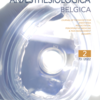Multicenter international survey on the clinical use of inhaled nitric oxide in the perioperative setting and critically ill patients Survey on inhaled nitric oxide
Nitric oxide, pulmonary hypertension, right ventricular failure, acute respiratory distress syndrome, cardiac surgical procedures, lung transplantation
Published online: Sep 27 2022
Abstract
Background: Inhaled nitric oxide (iNO) is a well-established off-label treatment of acute hypoxic respiratory failure and pulmonary hypertension, but high drug cost and lack of consistent proof of clinical benefit have led to restrictive expert recommendations regarding its use.
Objectives: To evaluate the current practice of the use of iNO in different hospital settings at an international society level.
Design & Setting: Web-based survey distributed via email to ESAIC and EACTAIC members.
Methods: Survey responses are depicted as absolute frequencies and percentages that were analysed using Microsoft Excel.
Results: One third of the respondents had institutional guidelines for the use of iNO. Pulmonary arterial hypertension, right ventricular failure, persistent pulmonary hypertension of the newborn and adult respiratory distress syndrome were the main indications for treatment with iNO. Prophylactic use of iNO during heart and lung transplantation or VAD implantation surgery was reported by 12-34%. The most frequently reported doses were 10-20 ppm and 20-40 ppm as initial and maximum treatment doses, respectively. Echocardiography was the most universally used form of advanced hemodynamic monitoring during treatment with iNO, followed by pulmonary artery catheterization. Half of the respondents had a fixed strategy to prevent rebound pulmonary hypertension during weaning from iNO, using phosphodiesterase inhibitors, prostacyclins or calcium channel antagonists.
Conclusion: In line with the available evidence and expert recommendations, iNO remains a rescue treatment reserved for the most severe cases in highly specialized centres. The observations made in this survey should inspire future research to help better define the role of iNO, also in the setting of an ARDS-pandemic and the emergence of alternative selective pulmonary vasodilators.
